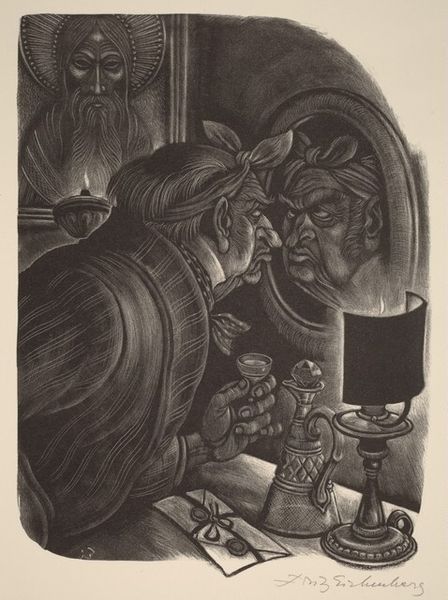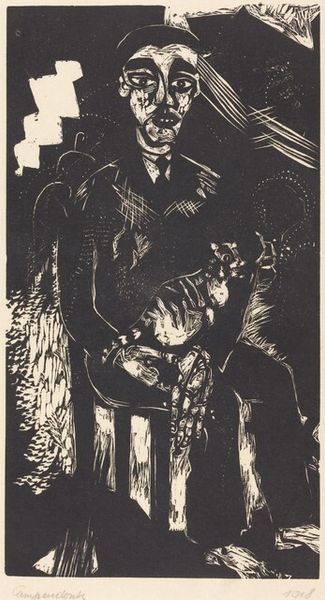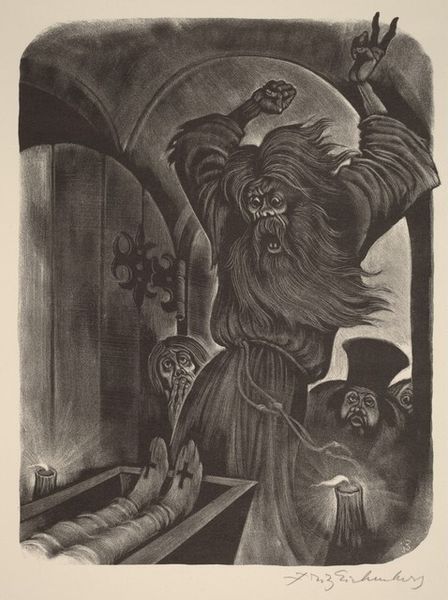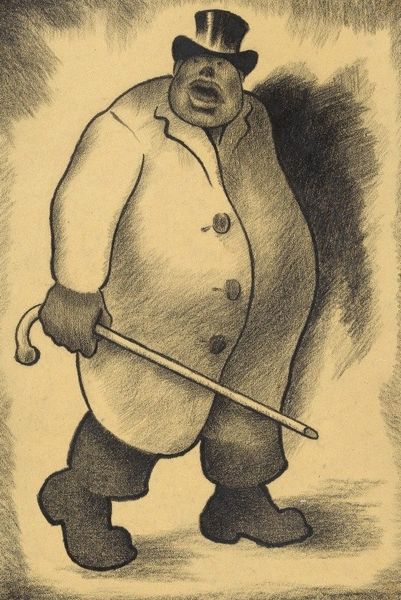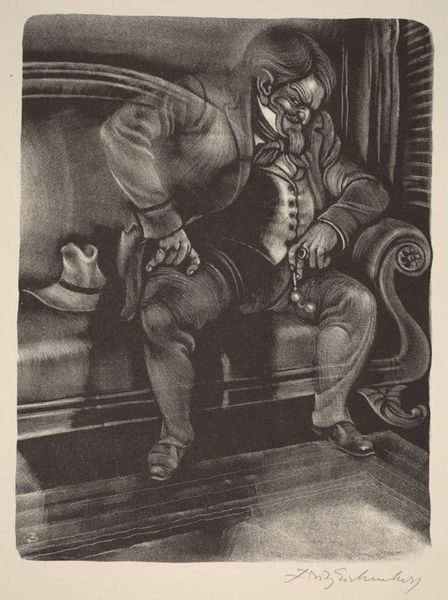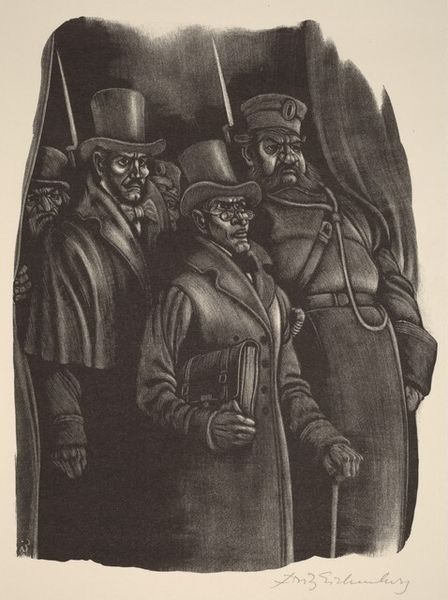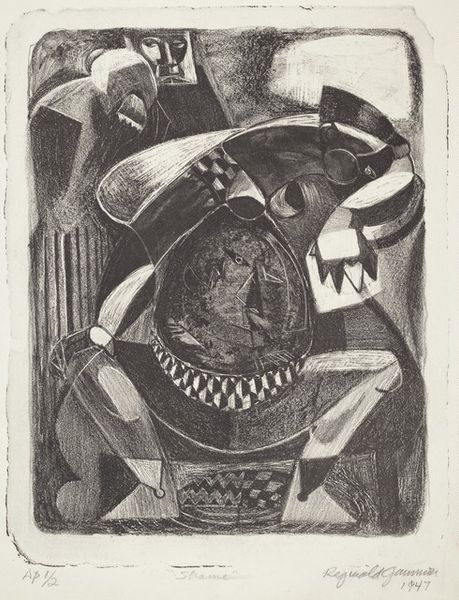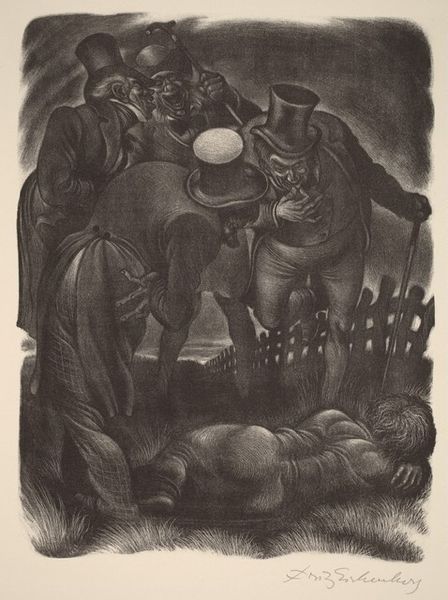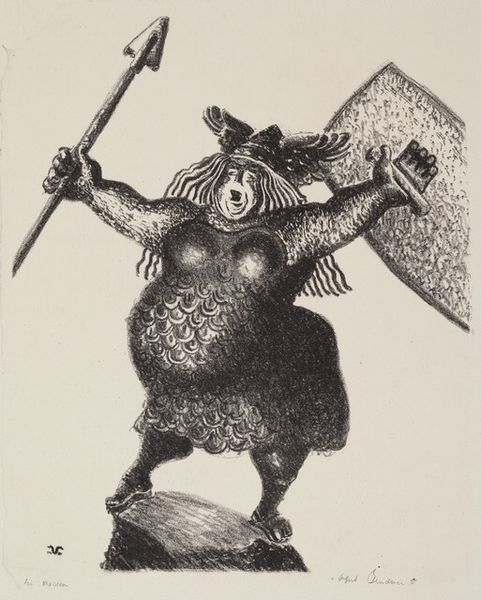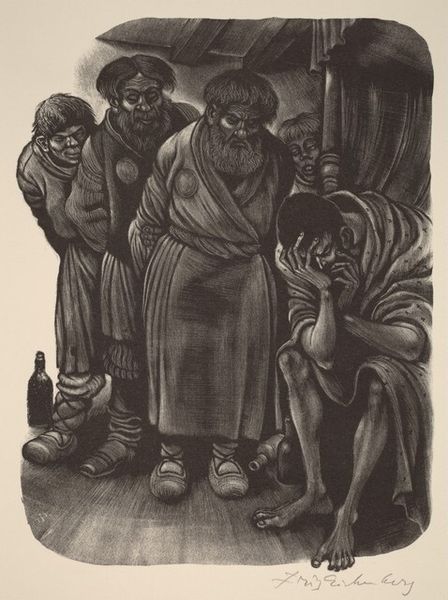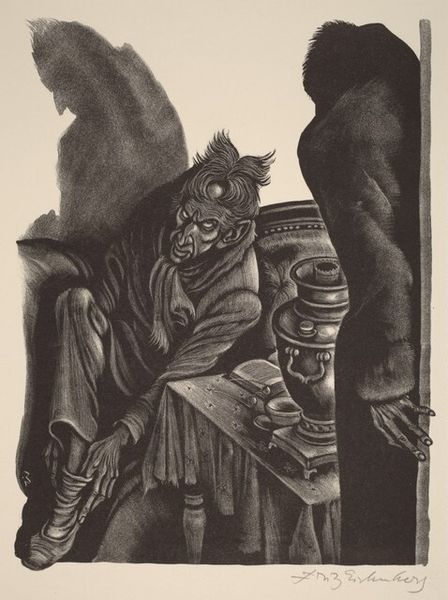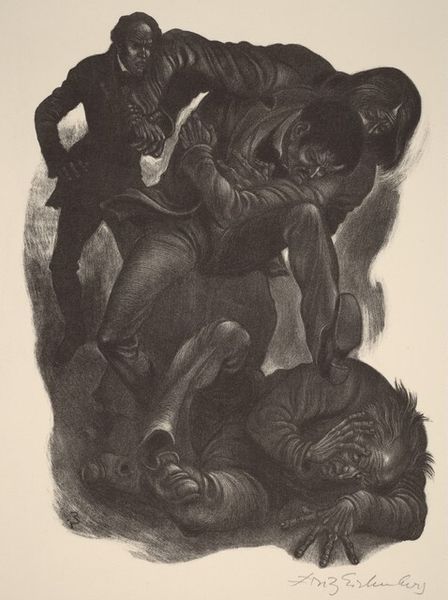
drawing, print, charcoal
#
drawing
# print
#
charcoal drawing
#
charcoal
Copyright: National Gallery of Art: CC0 1.0
Editor: This is "The Doctor," a 1949 charcoal drawing by Fritz Eichenberg. The stark contrast and somewhat grotesque figures create a really unsettling mood for me. How do you interpret this work, particularly the relationship between the two figures? Curator: The immediate symbol that jumps out is the obvious contrast between the corpulent figure draped in fur, adorned with what looks like a medal, towering over a gaunt, almost spectral figure. Consider what fur, and medals, symbolize. The artist sets up an immediate visual power dynamic, yes? Editor: Yes, it's wealth versus poverty, power versus helplessness…but it's almost cartoonish. Curator: Precisely. Think of the grotesque figures found in Daumier's caricatures or Hogarth's satires. Eichenberg employs similar techniques – exaggeration, almost bordering on the absurd, to deliver a pointed critique. Now, look closer at the seemingly minor details: the anxious hands of the smaller figure, the almost sneering expression on the Doctor's face. Editor: So the emotional impact is intensified by the physical contrasts and symbolism, adding to my sense of unease? Curator: Precisely. But go deeper: Consider the social context of 1949. Post-war anxieties, the critique of unchecked power, economic disparities…all are embedded in the visual vocabulary here. How do you suppose an audience during that time would read these cues? Editor: That makes me reconsider my initial reaction; it's not *just* unsettling, it’s a potent visual commentary on the inequalities and power dynamics of its time. Thanks. Curator: It’s a chilling reflection, isn’t it, of how societal imbalances echo through time and continue to find their expression through art.
Comments
No comments
Be the first to comment and join the conversation on the ultimate creative platform.
